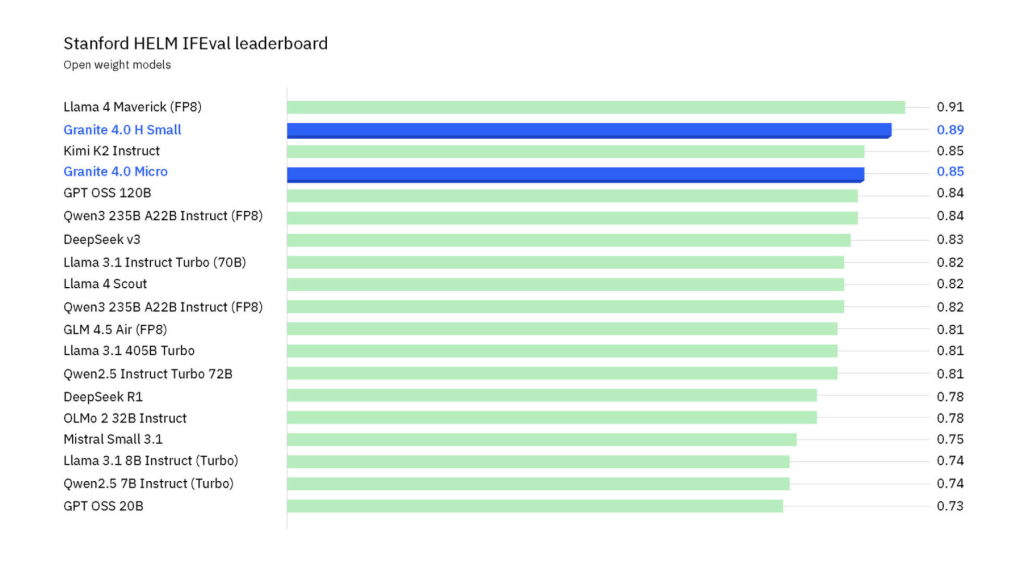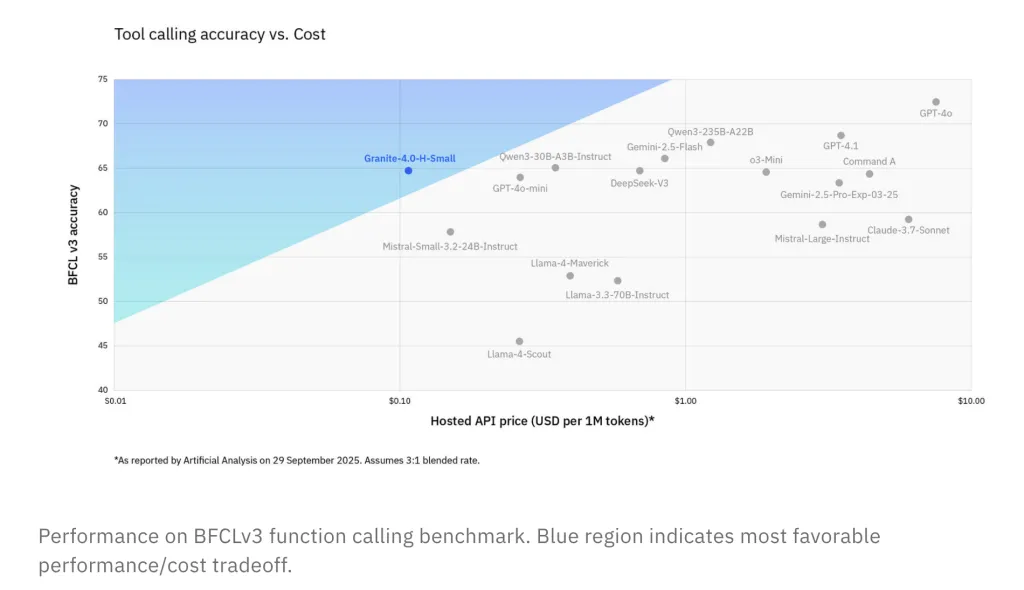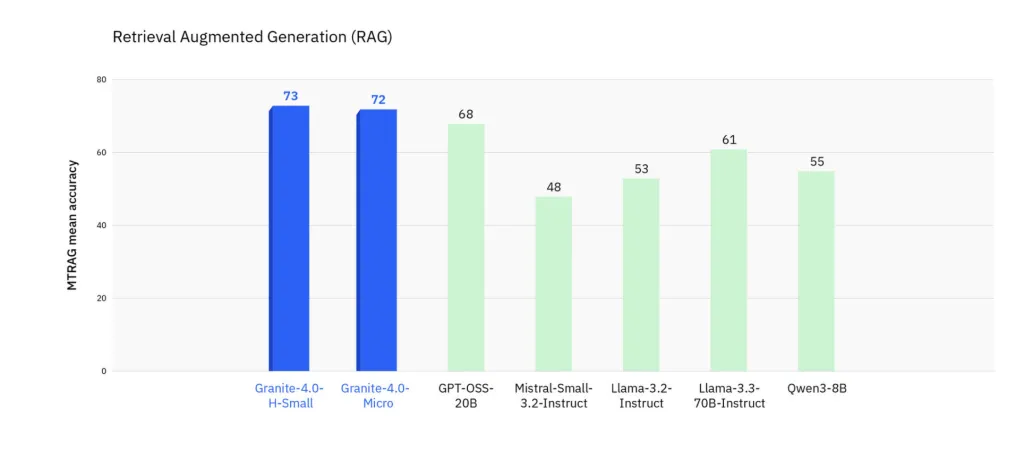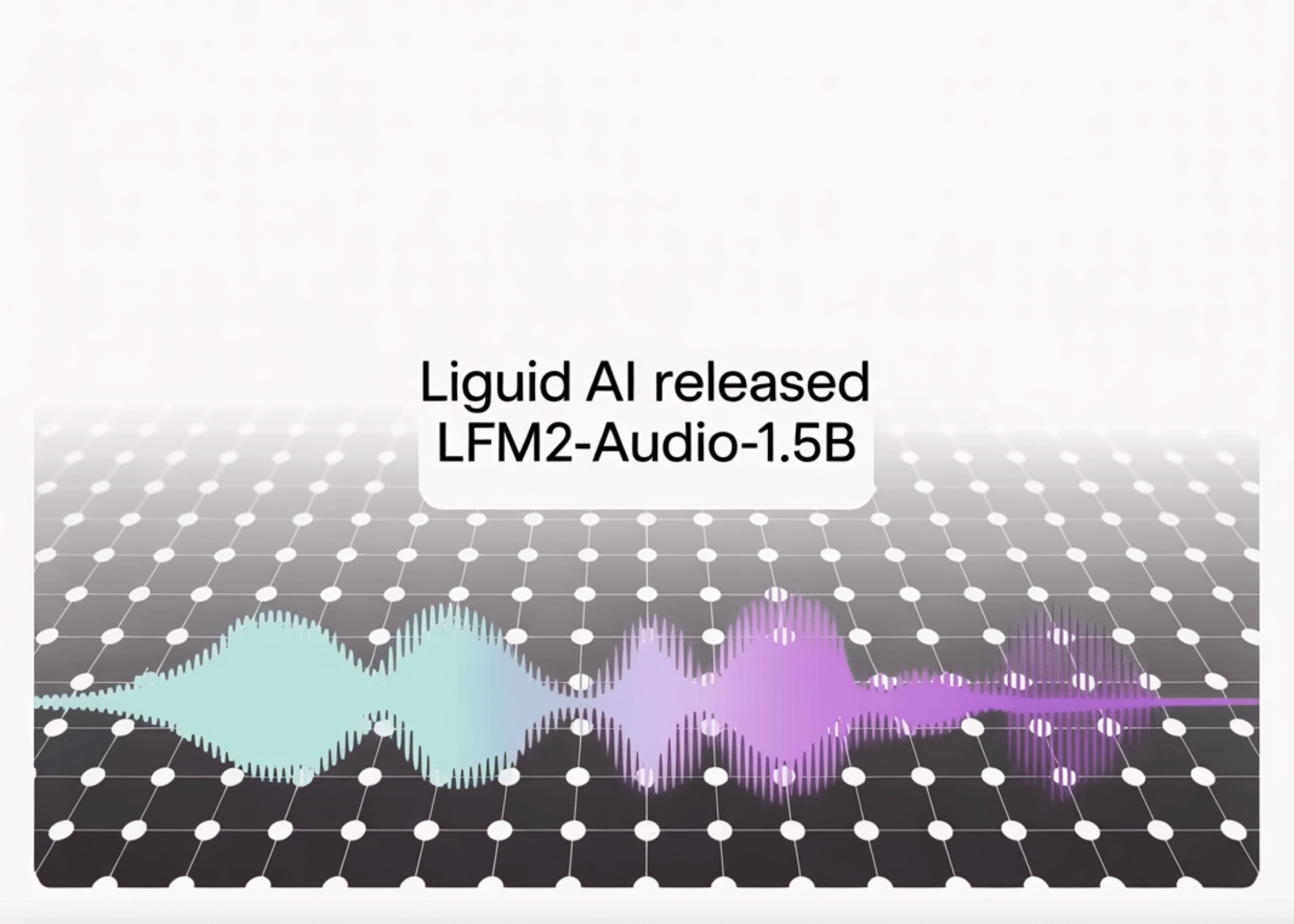
IBM just released Granite 4.0, an open-source LLM family that swaps monolithic Transformers for a hybrid Mamba-2/Transformer stack to cut serving memory while keeping quality. Sizes span a 3B dense “Micro,” a 3B hybrid “H-Micro,” a 7B hybrid MoE “H-Tiny” (~1B active), and a 32B hybrid MoE “H-Small” (~9B active). The models are Apache-2.0, cryptographically signed, and—per IBM—the first open models covered by an accredited ISO/IEC 42001:2023 AI management system certification. They are available on watsonx.ai and via Docker Hub, Hugging Face, LM Studio, NVIDIA NIM, Ollama, Replicate, Dell Pro AI Studio/Enterprise Hub, Kaggle, with Azure AI Foundry…
So, what is new?
Granite 4.0 introduces a hybrid design that interleaves a small fraction of self-attention blocks with a majority of Mamba-2 state-space layers (9:1 ratio). As per IBM technical blog, relative to conventional Transformer LLMs, Granite 4.0-H can reduce RAM by >70% for long-context and multi-session inference, translating into lower GPU cost at a given throughput/latency target. IBM’s internal comparisons also show the smallest Granite 4.0 models outperforming Granite 3.3-8B despite using fewer parameters.
Tell me what are the released variants?
IBM is shipping both Base and Instruct variants across four initial models:
- Granite-4.0-H-Small: 32B total, ~9B active (hybrid MoE).
- Granite-4.0-H-Tiny: 7B total, ~1B active (hybrid MoE).
- Granite-4.0-H-Micro: 3B (hybrid dense).
- Granite-4.0-Micro: 3B (dense Transformer for stacks that don’t yet support hybrids).
All are Apache-2.0 and cryptographically signed; IBM states Granite is the first open model family with accredited ISO/IEC 42001 coverage for its AI management system (AIMS). Reasoning-optimized (“Thinking”) variants are planned later in 2025.
How is it trained, context, and dtype?
Granite 4.0 was trained on samples up to 512K tokens and evaluated up to 128K tokens. Public checkpoints on Hugging Face are BF16 (quantized and GGUF conversions are also published), while FP8 is an execution option on supported hardware—not the format of the released weights.
Lets understand it’s performance signals (enterprise-relevant)
IBM highlights instruction following and tool-use benchmarks:
IFEval (HELM): Granite-4.0-H-Small leads most open-weights models (trailing only Llama 4 Maverick at far larger scale).

BFCLv3 (Function Calling): H-Small is competitive with larger open/closed models at lower price points.


MTRAG (multi-turn RAG): Improved reliability on complex retrieval workflows.


How can I get access?
Granite 4.0 is live on IBM watsonx.ai and distributed via Dell Pro AI Studio/Enterprise Hub, Docker Hub, Hugging Face, Kaggle, LM Studio, NVIDIA NIM, Ollama, OPAQUE, Replicate. IBM notes ongoing enablement for vLLM, llama.cpp, NexaML, and MLX for hybrid serving.
I see Granite 4.0’s hybrid Mamba-2/Transformer stack and active-parameter MoE as a practical path to lower TCO: >70% memory reduction and long-context throughput gains translate directly into smaller GPU fleets without sacrificing instruction-following or tool-use accuracy (IFEval, BFCLv3, MTRAG). The BF16 checkpoints with GGUF conversions simplify local evaluation pipelines, and ISO/IEC 42001 plus signed artifacts address provenance/compliance gaps that typically stall enterprise deployment. Net result: a lean, auditable base model family (1B–9B active) that’s easier to productionize than prior 8B-class Transformers.
Check out the Hugging Face Model Card and Technical details. Feel free to check out our GitHub Page for Tutorials, Codes and Notebooks. Also, feel free to follow us on Twitter and don’t forget to join our 100k+ ML SubReddit and Subscribe to our Newsletter. Wait! are you on telegram? now you can join us on telegram as well.
Asif Razzaq is the CEO of Marktechpost Media Inc.. As a visionary entrepreneur and engineer, Asif is committed to harnessing the potential of Artificial Intelligence for social good. His most recent endeavor is the launch of an Artificial Intelligence Media Platform, Marktechpost, which stands out for its in-depth coverage of machine learning and deep learning news that is both technically sound and easily understandable by a wide audience. The platform boasts of over 2 million monthly views, illustrating its popularity among audiences.







